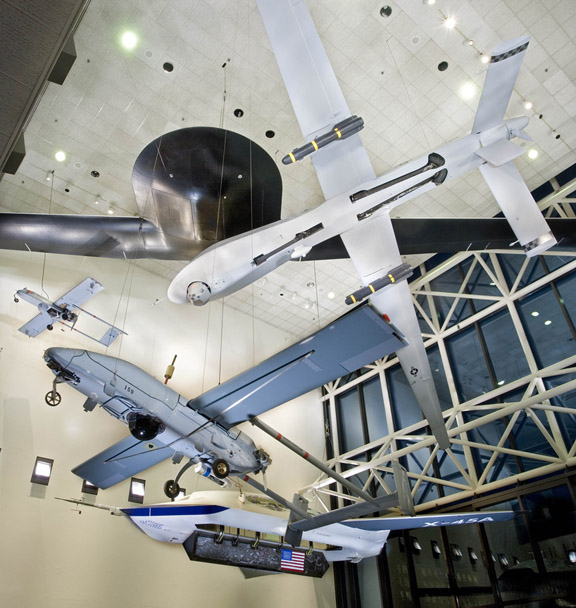The Smithsonian Institution’s National Air and Space Museum opened the military unmanned aerial vehicles exhibition April 24. The new display features six UAVs, three of which were developed for the Air Force: a General Atomics Aeronautical Systems MQ-1L Predator, Boeing X-45A Joint Unmanned Combat Air System, Lockheed Martin/Boeing RQ-3A DarkStar, AeroVironment RQ-14A Dragon Eye (Marine Corps), AAI Corporation RQ-7A Shadow 200 (Army), and Pioneer UAV RQ-2A Pioneer (Navy). “We want to educate our visitors even more on what UAVs have done and what they currently do for us today,” said Dik Daso, the museum’s curator for modern military aircraft. “The UAVs in our display have significant combat histories and important stories to tell.” For example, the Predator in the display was one of the first three MQ-1s over Afghanistan after Sept. 11, 2001. General Atomics Aeronautical Systems is sponsoring the exhibit. (Includes Air Force report by SSgt. J.G. Buzanowski)
Smithsonian Institution’s National Air and Space Museum opened the military unmanned aerial vehicles exhibition April 24. The new display features six UAVs, three of which were developed for the Air Force: a General Atomics Aeronautical Systems MQ-1L Predator, Boeing X-45A Joint Unmanned Combat Air System, Lockheed Martin/Boeing RQ-3A DarkStar, AeroVironment RQ-14A Dragon Eye (Marine Corps), AAI Corporation RQ-7A Shadow 200 (Army), and Pioneer UAV RQ-2A Pioneer (Navy). “We want to educate our visitors even more on what UAVs have done and what they currently do for us today,” said Dik Daso, the museum’s curator for modern military aircraft. “The UAVs in our display have significant combat histories and important stories to tell.” For example, the Predator in the display was one of the first three MQ-1s over Afghanistan after Sept. 11, 2001. General Atomics Aeronautical Systems is sponsoring the exhibit. (Includes Air Force report by SSgt. J.G. Buzanowski)
The Space Force is playing midwife to a new ecosystem of commercial satellite constellations providing alternatives to the service’s own Global Positioning Service from much closer to the Earth, making their signals more accurate and harder to jam.
